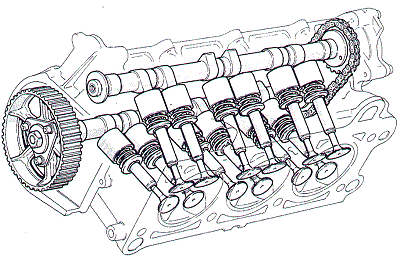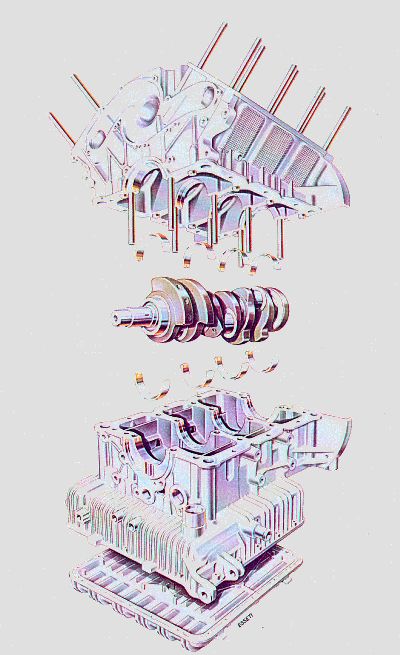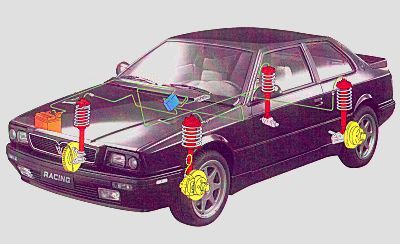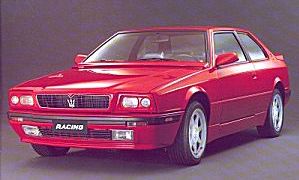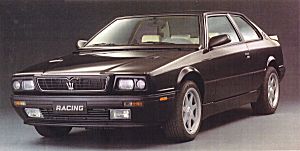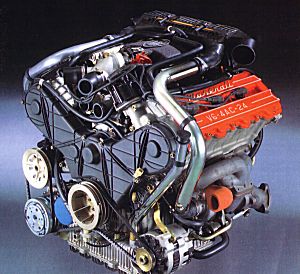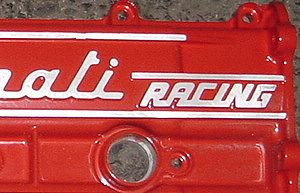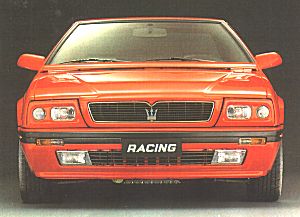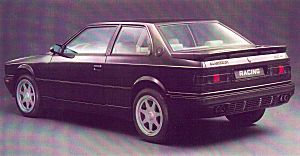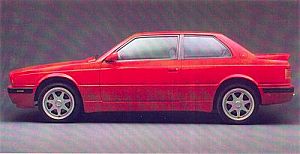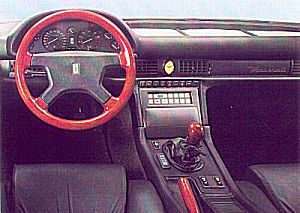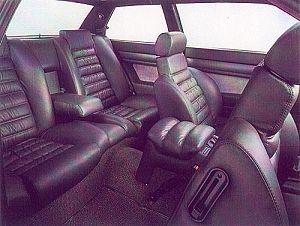Giancarlo Baghetti has tested the Racing round the circuit at Varano de'Melegari.
Maserati has remained one of the few Marques capable of creating a very special bond with its drivers; not just through its high performance but mainly because of the sheer driving pleasure it gives.
With the new 'Racing', this philosophy is enhanced by its 285 bhp power output, that, as well as representing the ultimate in power from any 2-litre engined production road car, is the result of further development of the classic twin-turboed V6, 24-valve engine.
This increase in power was acheived by modifications to many major components, namely the crankshaft, lightened con-rods and new alloy pistons.
It is remarkable not only by the fact that it achieves a specific power output of over 143 bhp per litre, but even more by the manner in which this power is distributed.
Furthermore it is achieved within the limits of the engine's 6250 rev limit, even more impressive is the torque powerful curve, even from low revs: at 2000 rpm one already experiences a remarkable surge that progressively increases to 3500 rpm (37.3kgm - 269.8 lb ft) when it really kicks in at a maximum torque of 38.1kgm (275.6 lb ft) at 4250 rpm.
The new 5-speed Getrag gearbox is smooth and precise, allowing quick gear selection.
Posessing a natural tendency to oversteer, the Racing allows one to slide
the rearend in a gradual and progressive manner, enabling the driver to exhibit spectacular opposite locks. On entering a bend at speed one is reminded to be cautious, characterized, by a slight tendency to understeer that disappears as soon as the external front wheel is loaded. On accelerating, this understeer changes to oversteer and can easily be controlled with absolute certainty, using a combination of the engine power and the quick action of the
steering wheel, without losing control even in the event of lifting one's foot off the accelerator: giving enough time to straighten the steering when the rearend regains adhesion.
That said, a more precise steering would be preferable. |

